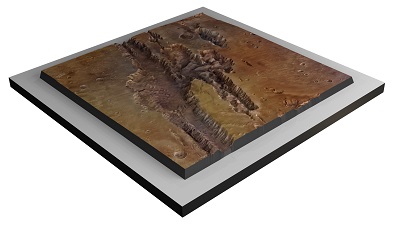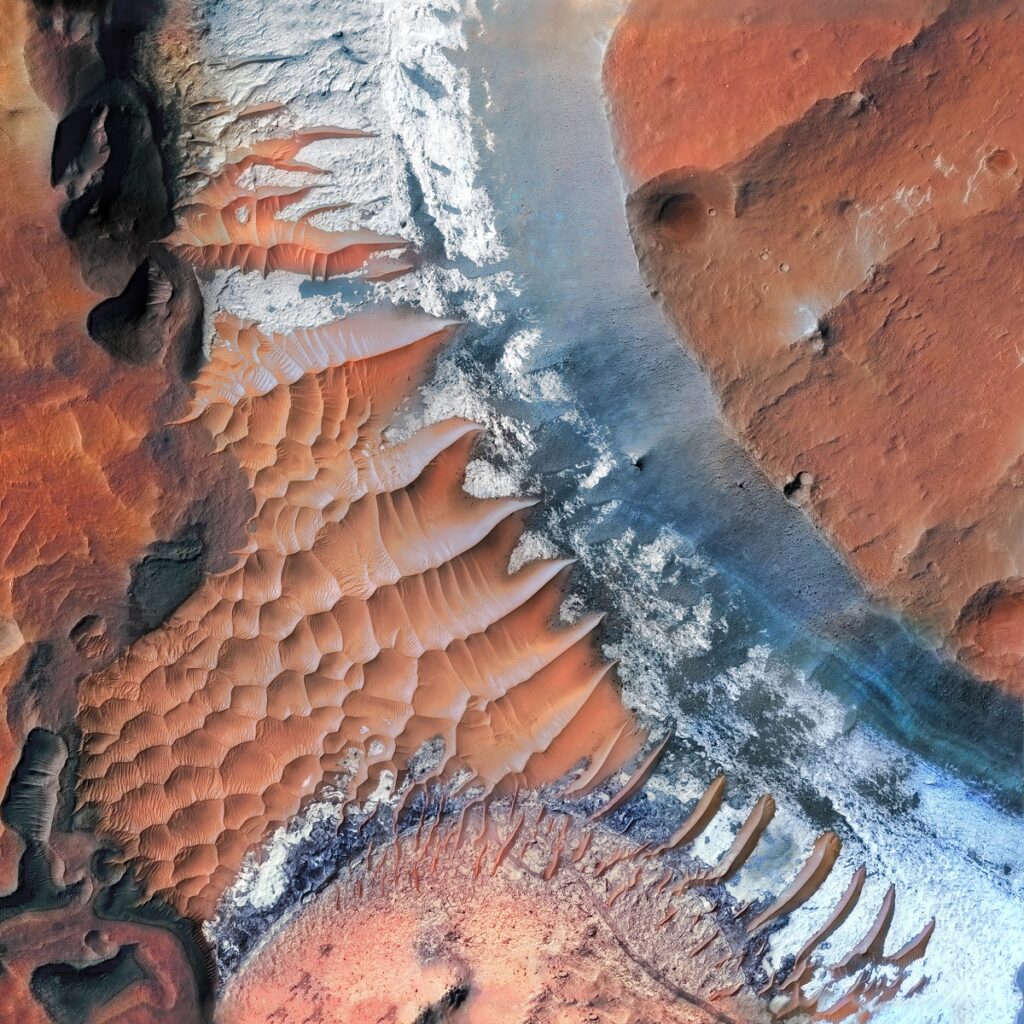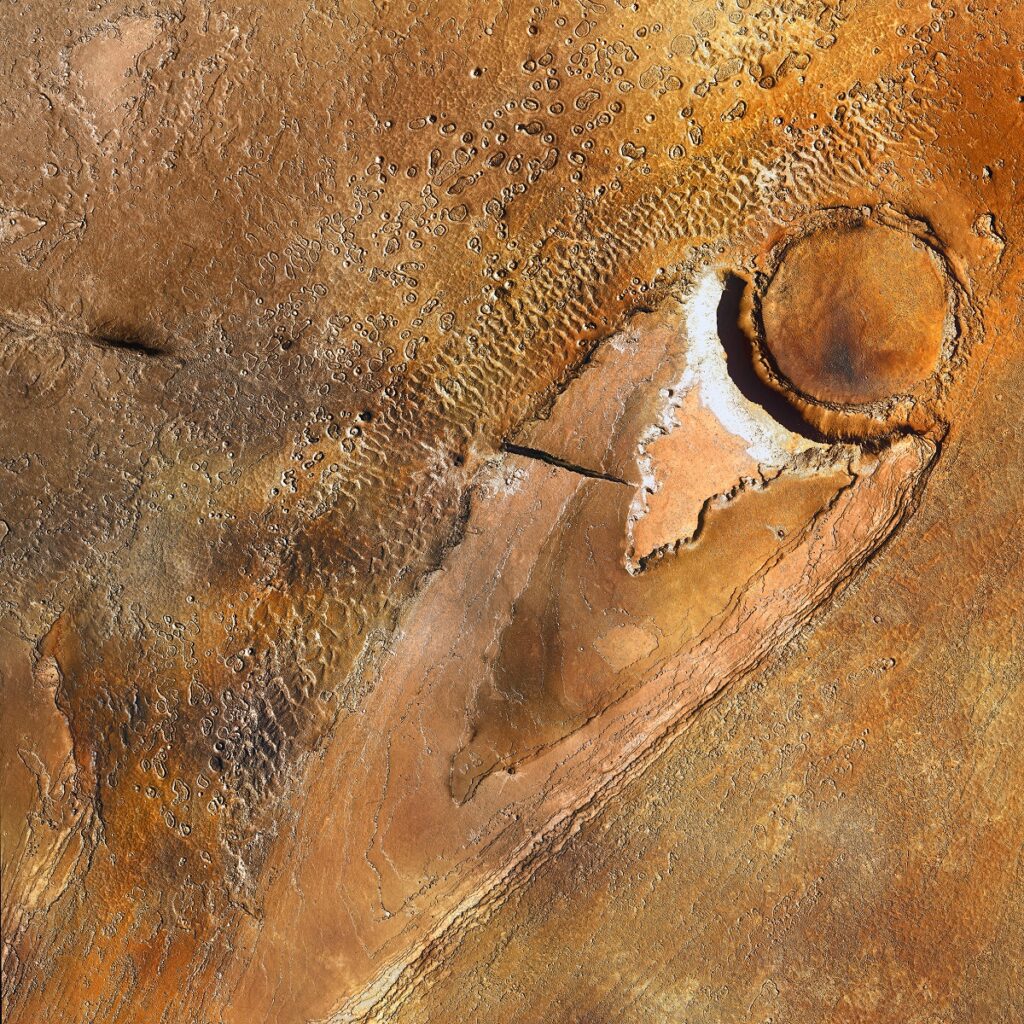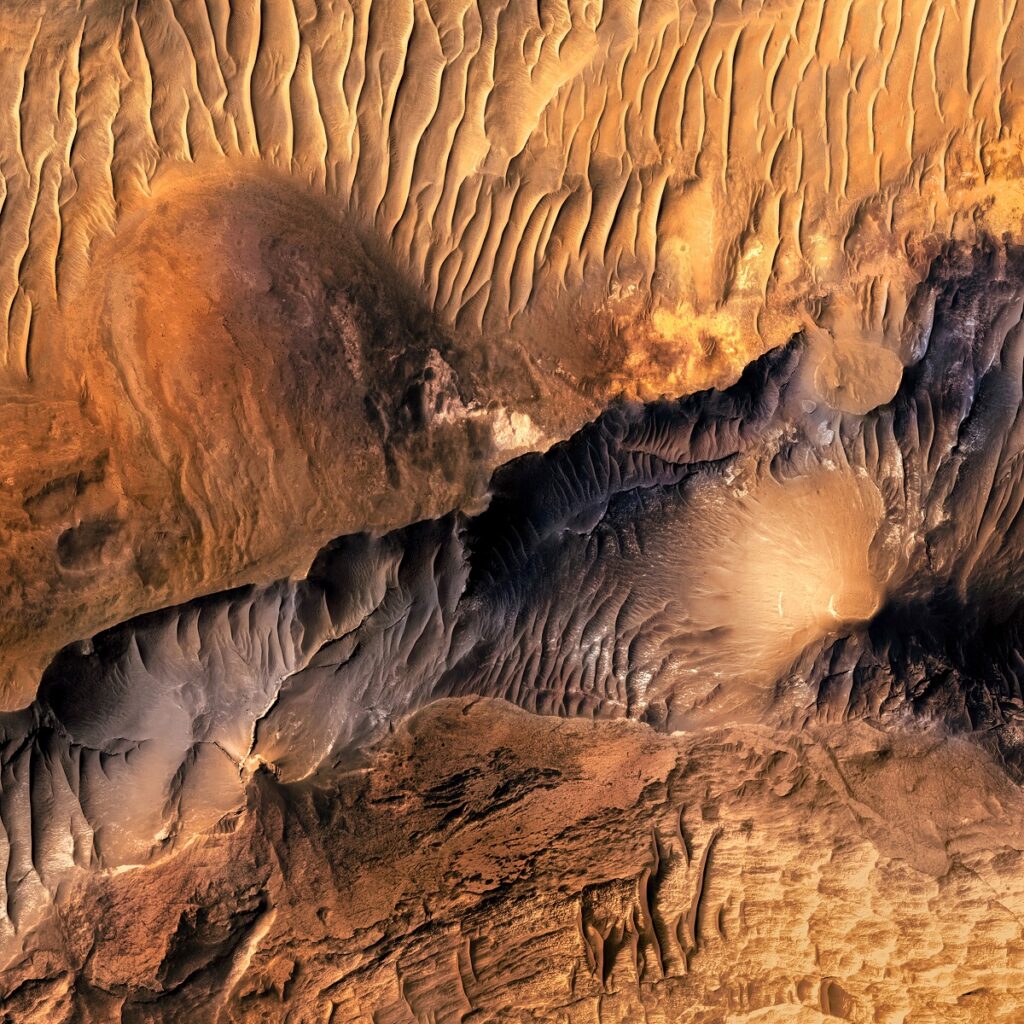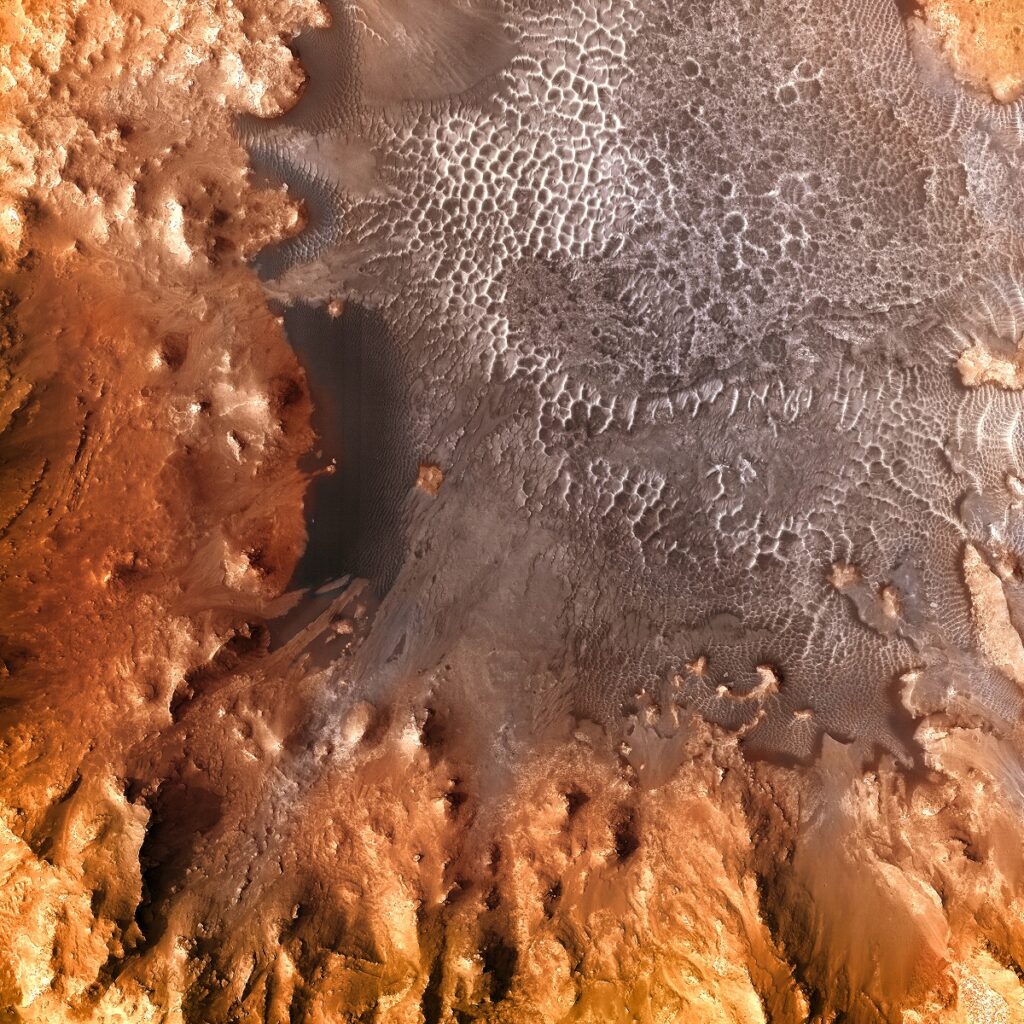Top 10 Deepest Canyons on Mars
Top 10 Deepest Canyons on Mars
WhiteClouds Builds 3D Marscapes and Canvas Prints
Prepare for a thrilling journey as we delve into the uncharted terrains of Mars to explore the most staggering geological features the Red Planet has to offer—its deepest canyons. Mars, often shrouded in an aura of mystery and fantasy, reveals awe-inspiring natural formations that dwarf many of Earth’s geographical features. From depths that could swallow Mount Everest to lengths that stretch across continents, these Martian canyons capture the imagination and stoke the fires of scientific curiosity. They serve not only as visual wonders but also as tantalizing clues that can unlock the secrets of Mars’ enigmatic past, possibly even pointing to evidence of ancient Martian life. In this comprehensive guide, we’ll bring to life the top 10 deepest canyons on Mars.
#1: Valles Marineris (10.5 Miles)
Kicking off our exploratory list is the absolutely staggering Valles Marineris, a canyon system that not only reigns as the deepest on Mars but also stands as one of the largest canyon networks in the entire solar system. Situated near the equator of the Red Planet, this massive geological rift stretches out for an overwhelming 2,500 miles—just about the distance spanning the width of the United States! Its awe-inspiring depth is calculated to descend a jaw-dropping 10.5 miles beneath the Martian surface. Adding an extra layer of intrigue to this colossal formation, there is ongoing scientific speculation that Valles Marineris could have been a repository for water at some point in Martian history. This tantalizing thought raises profound questions regarding the feasibility of past life on Mars. In the realm of popular culture, this iconic canyon has been immortalized as the dramatic setting for numerous science fiction novels, enhancing the mystique and allure of Martian landscapes.
#2: Hebes Chasma (7.8 Miles)
Located as a distinct and isolated segment within the sprawling Valles Marineris canyon system, Hebes Chasma is a geological marvel that deserves a spotlight of its own. This captivating chasm descends to an extraordinary depth of 7.8 miles, capturing the imagination of scientists and space enthusiasts alike. Its structure resembles that of an immense, ancient amphitheater, and at its core lies a mysterious, flat-floored pit. The origin of this intriguing central pit is the subject of scientific debate. One leading hypothesis posits that it might be an accumulation of volcanic ash that solidified over the eons, although definitive answers remain elusive. This unique feature adds another layer of fascination to Hebes Chasma, leaving scientists eager to uncover its hidden secrets.
#3: Candor Chasma (7 Miles)
Taking the next spot on our whirlwind tour is the enigmatic Candor Chasma, a prominent canyon within the awe-inspiring Valles Marineris system. Diving an incredible 7 miles down into the crust of Mars, this trench is much more than a stunning geological formation. It is a vault of scientific treasure, containing vast deposits of sulfate salts. These salts have scientists on the edge of their seats, as they are frequently associated with water’s past presence. The discovery lit up the scientific community in 2021 when the Perseverance Rover identified a compositionally similar compound, prompting global media coverage and reinvigorating discussions on Martian life.
#4: Ophir Chasma (6.8 Miles)
Ophir Chasma stands as another intriguing part of the Valles Marineris complex, boasting a depth that extends to a breathtaking 6.8 miles. What sets this chasm apart is its spectacularly stratified walls. These multi-layered formations are considered a goldmine for scientific inquiry, harboring the potential to revolutionize our understanding of the Martian geological timeline. The revelation that rock samples from this unique setting could effectively rewrite Martian science textbooks makes Ophir Chasma a top priority for future exploration missions.
#5: Eos Chasma (6.1 Miles)
The fascinating Eos Chasma, named after the Greek goddess symbolizing the break of day, plunges down 6.1 miles into the Martian surface. It distinguishes itself in the catalog of Martian canyons with an extraordinarily intricate network of channels, much more complex than its counterparts. These pathways are tantalizing hints of ancient water flows, capturing the imagination of researchers eager to unpack the hidden layers of the Martian environmental history.
#6: Ganges Chasma (5.9 Miles)
Ganges Chasma, a captivating canyon that delves 5.9 miles below the surface of Mars, is an intricate blend of geological phenomena and erosional features likely created by water. The chasma’s spellbinding topography has not only been the subject of scientific study but has also served as the muse for artists and game developers, inspiring a variety of creative works across mediums.
#7: Coprates Chasma (5.1 Miles)
Stretching down to a depth of 5.1 miles, Coprates Chasma punctuates the Martian terrain with its intriguingly smooth floor. Scientists are buzzing with theories that this uniform surface might be due to sedimentary deposits, although rigorous studies are yet to confirm this hypothesis. Named after an ancient river in what is now Iran, Coprates Chasma offers a poetic echo to the concept of water-rich ancient Mars, further stimulating scientific curiosity.
#8: Ius Chasma (4.4 Miles)
The enigmatic Ius Chasma sinks down to 4.4 miles, serving as another fascinating landmark on the Martian topography. What’s especially perplexing to scientists is the canyon floor’s material composition, which starkly contrasts with the walls, creating a geological conundrum that still puzzles the experts.
#9: Tithonium Chasma (3.5 Miles)
With a depth of 3.5 miles, Tithonium Chasma is especially known for its striking, snake-like structure. The chasm’s undulating form was so captivating that it was named after Tithonus, a Greek mythological figure associated with eternal life but missing eternal youth—a poetic and somewhat melancholic reference to Mars’ own long but tumultuous history.
#10: Melas Chasma (3.3 Miles)
Concluding our journey, we reach Melas Chasma, a 3.3-mile-deep canyon with a peculiarly dark appearance. This shadowy region gets its name from the Greek word for “dark,” and it has provided substantial evidence of landslides over time. These geological movements are a strong indicator that Mars’ surface, far from being a static wasteland, still has many enigmas yet to reveal.
As we reach the end of this exhilarating voyage through the mind-boggling top 10 deepest canyons on Mars, it’s clear that these titanic chasms are not just topographical features; they’re monumental puzzles waiting to be solved. They encapsulate the essence of the Red Planet’s mysterious geological history, offering tantalizing hints of what Mars might have been like eons ago—possibly teeming with water and perhaps even life. In both popular culture and scientific research, these majestic canyons serve as endless sources of inspiration, sparking the imaginations of writers, artists, and scientists who dare to ponder the mysteries of the universe. As our understanding of Mars continues to grow, each new discovery adds another piece to the grand puzzle, bringing us one step closer to unraveling the ancient and enduring secrets hidden deep within these Martian abysses.
Check out our 3D Mars Learning Center for more information on Mars and its deepest canyons. You can also learn more at: NASA Mars Exploration.
More About Mars
Contact us today to learn more about our 3D services and how we can help you achieve your goals.

